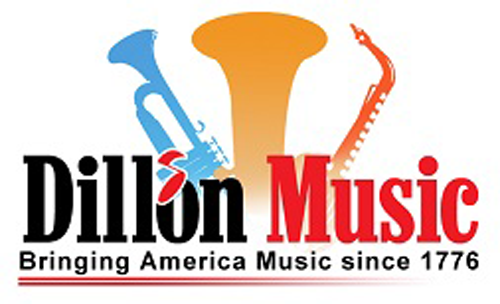A Brief History of Brass Bands
The history of brass bands dates back as far as the early 19th Century, when a number of technological and social changes produced a new kind of ensemble which proved to be popular with performers and audiences alike
Early Brass Instruments were Limited to a Few Notes
Before roughly 1830, brass instruments were not commonly played outside of orchestras, and the existing horns, trumpets, and cornets had a huge limitation: without a viable system of keys or valves they were limited to playing only the harmonic series of notes dictated by the length of their tubing. Trombones, of course, got around this problem by adjusting the length of the tubing with their slide, but woodwind instruments such as flutes and clarinets, which could play every note in their range through the use of keys along their length, were used far more commonly in the bands of the day.
Valves Removed this Limitation
The introduction in the 1830s of instruments with valves, which instantaneously diverted the airflow through different lengths of tubing to change the pitch, removed this limitation. In particular, the horns produced by Adolphe Sax (known collectively as saxhorns) proved to be popular with bands. They were made of a durable material (metal), and they could be industrially mass-produced from patterns at a time when string and woodwind instruments were still produced by traditional craft methods. With the use of only three valves they could produce every pitch in their range and be reasonably in tune, which made them relatively easy to learn. Every instrument, from the cornets on top to the bombardons or basses on the bottom, used the same valve fingerings, making it possible for players to switch instruments or parts if required. Finally, all of the saxhorns were "conical" in shape, gradually increasing the inside bore size along the length of the horn from the mouthpiece to the bell, giving them a warm sound that blended well into a larger ensemble sound.
Brass Instruments Became Preferred Choice
All of these reasons made brass instruments the preferred choice among the many new bands that were cropping up in the mid-19th Century in Europe (especially Britain) and the United States. This was a period marked by major population shifts to new cities and towns as factories and mills opened, and music grew as a major interest of the new working and middle classes. In this time before recordings, the main exposure most people had to the major musical works of the day was through performances of transcriptions by local or touring bands. With a new large audience, and an increasing number of interested players, bands became a major feature of the mid- to late-1800s. Every town or community worth its salt had a band, sometimes with only eight or a dozen players, but also sometimes much larger.
Bands Found Community Funding
Bands were also frequently founded or supported by private companies or wealthy capitalists. Part philanthropy (industrialists were often interested in improving the living conditions and leisure activities of their workers; not coincidentally, this same period also saw the development of parks, athletic fields, club sports, and public libraries) and part advertisement, some of these bands have even managed to outlive the companies that founded them. For example, the famous Black Dyke Mills Band was named for the local textile mill whose owner bought a set of horns for the band in 1855. The band remains, but the mill has long since disappeared.
Contests Influence Brass Band Development
Contests have been another major influence on the development of brass bands. From very early on in their history, brass bands have been going to competitions, often for cash prizes but sometimes just for bragging rights. Contests provided an incentive for bands to constantly stretch and expand their repertoire and technique in pursuit of excellence, either through their own arrangements or through required test pieces that were specially commissioned by the contest organizers. Also, within a few decades of the first bands and contest, the need to have competing groups all play with similar numbers and types of horns led to the standard instrumentation of roughly 25 to 30 musicians that persists to this day. Contests today come in many forms; often all bands are required to play a required test piece, or the contest may be more free-form and only require certain elements in each band's performance (such as a march or a slow hymn). "Entertainment" contests are the least structured in their formal elements but, with points given for entertainment value as well as musical technique, require each band to look at their performance through the eyes of an audience.
Brass Bands Lost Popularity to Concert Bands in the U.S.
Interestingly, while brass bands continued to be popular in much of the rest of the world, in the United States they gradually disappeared early in the 20th Century, replaced by the current familiar concert band which includes a large number of woodwinds. Perhaps due to the popularity it achieved in jazz, or maybe because conductors wanted a more "orchestral" sound, the trumpet replaced the cornet as the highest brass voice, and french horns took the place of the similarly pitched tenor horns.
Brass Bands find Renewed Popularity with over 100 in the U.S.
In the past few decades, however, brass bands have begun to rebound here in America. Popular with brass musicians because they get to play more challenging and extensive parts, they are also popular with audiences who appreciate the unique and dynamic music that brass bands make. There are over 100 active brass bands in the U.S. today, including many in the larger British tradition and others in the smaller style common during the Civil War era. That brass bands persist to this day is a testament to their continued vibrancy and vitality as skilled and entertaining ensembles.



